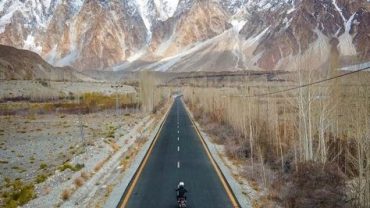Northern Pakistan: A Must-Visit Destination for Adventure Seekers and Nature Lovers
“Northern Pakistan offers unparalleled adventure, and it’s the ultimate destination for nature lovers and thrill-seekers alike. Whether you are exploring Hunza Valley or trekking in the Karakoram Range, Northern Pakistan offers a one-of-a-kind experience.”
Itinerary for Exploring Northern Pakistan
Day 1: Arrival in Islamabad
Begin your journey in Pakistan’s capital, Islamabad. Spend the day exploring landmarks such as Faisal Mosque, the Pakistan Monument, and the serene Rawal Lake. Take a short trek up the Daman-e-Koh viewpoint for panoramic views of the city.
Tip: Acclimatize to the local culture and stock up on essentials for your northern adventure.
Day 2-3: Hunza Valley
Travel north to the majestic Hunza Valley, a region renowned for its towering peaks, lush orchards, and warm hospitality. Spend two days exploring its natural and cultural treasures.
-
Key Attractions:
- Baltit Fort: A 700-year-old structure that offers insights into the region’s history.
- Altit Fort: Another architectural marvel with spectacular views of the valley.
- Eagle’s Nest: A viewpoint offering stunning sunsets over the Rakaposhi and Ultar Sar mountains.
-
Cultural Experiences:
- Interact with locals and taste traditional Hunza dishes like Chapshuro (meat pie) and Mulida (sweet bread dessert).
- Visit the local bazaars for handicrafts and gemstones.
Day 4: Khunjerab Pass
Embark on a scenic drive to the Khunjerab Pass, the world’s highest paved border crossing at 4,693 meters. The journey offers jaw-dropping views of snow-capped mountains and the chance to spot wildlife like ibexes and snow leopards.
-
Activities:
- Capture iconic photos at the Khunjerab border gate.
- Experience the thrill of standing on the China-Pakistan border.
Tip: Dress warmly as temperatures here can be freezing even in summer.
Day 5: Attabad Lake and Passu Cones
Visit the turquoise-blue Attabad Lake, formed after a landslide in 2010. Enjoy boating, jet-skiing, or simply relaxing by the shore.
-
Activities:
- Take a boat ride for mesmerizing views of the surrounding mountains.
- Marvel at the Passu Cones, iconic peaks that are a photographer’s delight.
Day 6: Skardu Valley
Head to Skardu, the gateway to some of the world’s highest peaks. Known for its surreal landscapes, Skardu offers a mix of adventure and tranquility.
-
Key Attractions:
- Shangrila Resort: Known as “Heaven on Earth,” this resort is surrounded by lush greenery and a tranquil lake.
- Deosai National Park: The “Land of Giants” is a high-altitude plateau teeming with wildlife.
- Satpara Lake: A crystal-clear lake perfect for picnics and photography.
Day 7: Return to Islamabad
Conclude your journey with a scenic flight or road trip back to Islamabad. Reflect on the incredible experiences and cherish the memories of your adventure in Northern Pakistan.
Packing Tips and Travel Advice
-
Clothing:
- Layered clothing is essential due to varying temperatures. Include warm jackets, thermal wear, and waterproof gear.
- Comfortable trekking shoes are a must for hiking trails.When preparing for a trip to Northern Pakistan, remember that the climate can vary drastically.
-
Travel Essentials:
- Carry a first-aid kit, sunscreen, and insect repellent.
- Pack reusable water bottles and water purification tablets.
-
Documents:
- Keep multiple copies of your passport, visa, and travel insurance.
- If traveling to restricted areas, ensure you have the necessary permits.
-
Connectivity:
- Purchase a local SIM card for seamless connectivity.
- Power banks are essential as electricity can be scarce in remote areas.
-
Cultural Sensitivity:
- Dress modestly and respect local customs.
- Learn a few basic Urdu phrases to communicate with locals.
Best Time to Visit Northern Pakistan
The best time to explore Northern Pakistan depends on your interests:
- Spring (April to June): Ideal for lush green valleys, blooming flowers, and moderate temperatures.
- Summer (July to September): Perfect for trekking, as high-altitude areas are snow-free.
- Autumn (October to November): Offers stunning fall foliage in regions like Hunza.
- Winter (December to February): A haven for snow lovers, but access to some areas may be restricted due to heavy snowfall.
Planning Your Trip
-
Transportation:
- Road Travel: Rent a 4×4 vehicle for off-road adventures. Public transport is available but may not be reliable.
- Flights: PIA operates flights to Gilgit and Skardu, though schedules are weather-dependent.
-
Accommodation:
- Options range from luxury resorts like Serena Hotels to budget-friendly guesthouses.
- Booking in advance is recommended, especially during peak seasons.
-
Safety:
- Northern Pakistan is generally safe for tourists, but always stay updated on local advisories.
- Hire local guides for trekking and exploring off-the-beaten-path areas.





Comment (0)